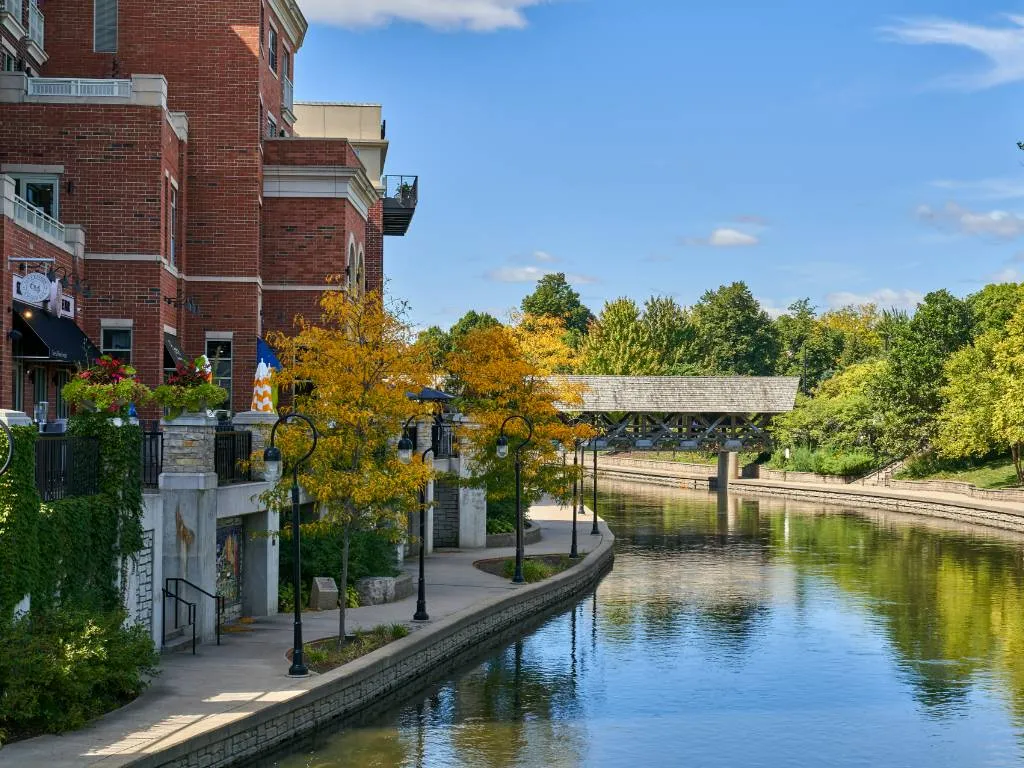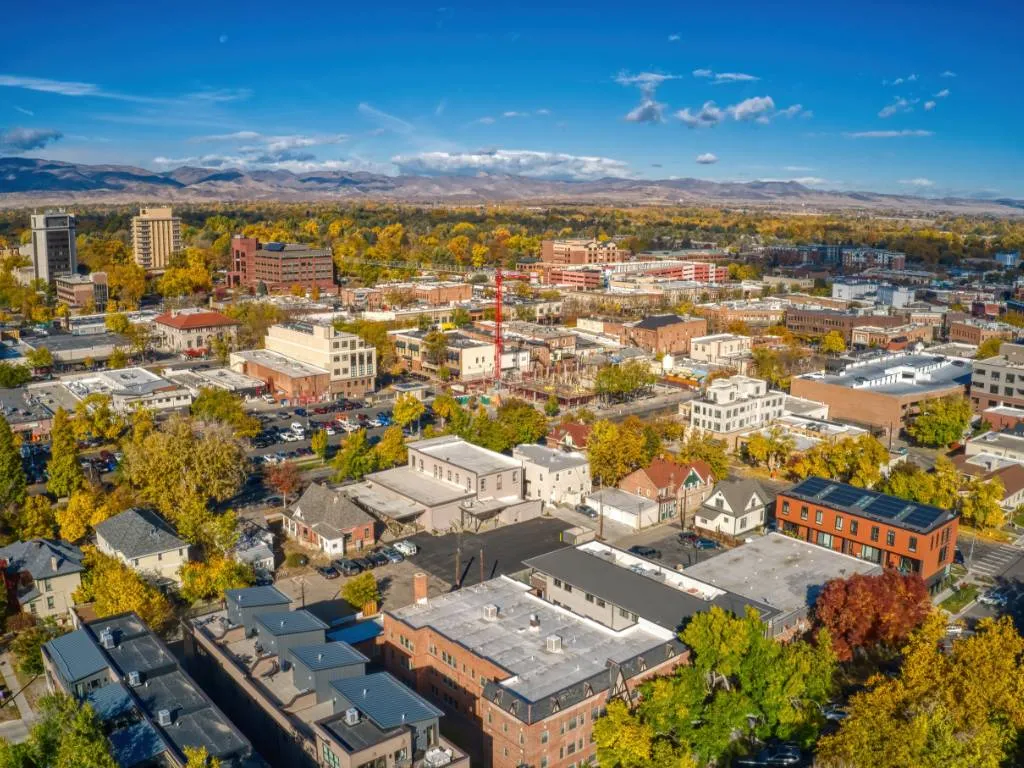10 Things to Know Before Moving to Naperville, IL

If you like the idea of living in a historic city that has a thriving economy, is family-friendly, is safe, and offers a high quality of life, then Naperville, Illinois, is the way to go.
Located in DuPage and Will Counties, over 147,000 people live in this lovely city, making it the state’s 4th most populous metropolis. Aside from being one of the top 10 best places to live in the Midwest, this city is also the wealthiest in the region and the 11th richest in the country. Naperville certainly has a lot to offer.
Let’s consider 10 things to know before moving to Naperville, IL!
1. Naperville has good weather
Naperville has good weather all year round, and the city experiences all four seasons. Here, you get to enjoy different activities peculiar to the different seasons, and this makes the place fun and exciting all through the year.
The hottest month in Naperville is July, which has an average high temperature of 83°F, while the coldest month is January, with an average low temperature of 15°F. Naperville experiences 120 days of precipitation annually, with an average of 39 inches of rain and 29 inches of snow. Be sure to pack your winter coat and water-resistant shoes when coming here.
2. The crime rate is 91% less than the national average
With a crime rate that is 91% less than the national average and also being ranked in the 78th percentile for safety, Naperville is one of the safest places to live in the state and also in the country.
1 in 511 residents are victims of violent crime, while 1 in 284 are victims of property crime. Overall, this city is a very safe place to live. However, just like living in any other city, you should exercise caution and be alert to avoid being a victim of any kind of crime.
3. Naperville’s cost of living is 41% higher than the national average
With the cost of living 41% higher than the national average, Naperville is no doubt an expensive place to live.
In this city, utilities are 3% higher than the national average, and groceries are 5% higher than the national average; a loaf of bread costs $4.09, a gallon of milk costs $2.56, and a hamburger costs $5.41. Healthcare expenses are 13% higher than the national average, while transportation expenses are higher than the national average by 25%.
Naperville’s housing costs are also higher than the national average. The median home price in this city is $497,926, which is high compared to the national average of $428,000. If you’re moving from a less expensive city, you should be prepared for the costly life here in Naperville.
4. Enjoy some great meat at Fire It Up Naperville or Granite City Food and Brewery
Naperville is widely known to offer a variety of both local and international cuisines. There is always something new and delicious to taste in the many restaurants found in this city. To enjoy some of these great meals, you can visit Fire It Up Naperville, a notable restaurant in this area known for its innovative tacos made with locally sourced ingredients.
Granite City Food and Brewery is another great option. Here, you can get Asian shrimp, flatbread, chicken tortillas, and homemade soup.
5. Naperville offers jobs in the manufacturing, business, or healthcare sector
Being part of the Illinois Technology and Research Corridor and home to many major companies, Naperville, without a doubt, has a thriving economy. The city has an unemployment rate of 4.4%, only 1.3% higher than the national average. Naperville is also known for offering jobs with good pay.
If you’re skilled in either technical services, manufacturing, business services, mining, education, healthcare, or agricultural sectors, then finding a job in Naperville would be easy.
Some of the major employers in this region are Northwestern University, Stanley Convergent Security, Accenture, Ottawa Acquisition, and Edward-Elmhurst Healthcare.
6. Naperville is home to 28 schools
There are 28 schools in Naperville. These include 6 preschools, 15 elementary schools, 5 middle schools, and 2 high schools, all of which are highly rated.
In addition, Naperville is close to numerous prestigious universities and colleges. These higher education institutions include North Central College,
College of DuPage, Benedictine University, and Aurora University. Living in Naperville gives you lots of options with regard to schooling options for your kids and also for yourself if you choose to further your studies.
7. Traffic is an issue in Naperville
The average walkability score in this area is only 34 out of 100; therefore, most residents either have to drive or rely on public transportation. Traveling to most parts of the city requires the use of a vehicle, and since most residents use a car, this causes traffic congestion, causing residents to spend long hours on the road almost every day while commuting to work. This is a major downside to living in Naperville.
However, some areas are walkable, and hence, traffic is always less congested there. That includes Downtown, East Highlands, and Wood Lake.
8. Take a visit to Centennial Beach or Naperville Kayak
Apart from having good schools and being a safe place to live, Naperville is also a family-friendly city and a great spot to raise your kids. You never run out of activities in this city, as there are lots of them for all ages and many parks and beaches you can visit.
A popular place in this city is Centennial Beach. This is a great place to visit, and it is well-visited by residents. You can hang out with your family here and enjoy swimming, playing beach volleyball, and picnicking.
Naperville Kayak is an exciting location for renting kayaks and paddleboards that are appropriate for the whole family. If you plan on going on a river trip in Naperville, you should check out Naperville Kayat.
9. A place for history buffs
Naperville has a lengthy past. The town, which bears Joseph Naper’s name, was founded in 1831. With historically noteworthy sawmills, gristmills, shops, and buildings, it is the oldest city in Will County. History lovers should surely visit this location. Visit Naper Settlement, a pioneer reenactment hamlet and outdoor history museum with more than 30 historic structures.
Also worth seeing in Naperville is Riverwalk Park, a historical park. The fact that Riverwalk Park is free to enter and has a playground, walking trails, paddleboat rentals, and an outdoor ice rink in the winter makes it even more fascinating. If you’re interested in history, you’ll love living here.
10. Live at Acorn Hill Estates or Ashbury
Naperville is one of the most costly cities in the United States, but residents can rest assured that their investment will pay off. The city is home to many different communities, but the following are some of the best:
The Acorn Hill Estates neighborhood features single-family houses constructed between the 1980s and 1990s.
Ashbury is a one-of-a-kind community that was developed in the 1990s and features 1,000 single-family houses spread on 514 acres. There is a pool, tennis courts, and sports grounds all within the community itself.
Naperville’s Carillon Club is an exciting new townhome neighborhood for retirees that was created in the latter part of the 2010s exclusively for people 55 and older.
To Sum it All Up
Naperville is a great place to call home. The safety, thriving economy, liberal politics, and good schools make it an attractive location. The high cost of living and traffic issues are, however, things to consider before deciding to move to Naperville.






